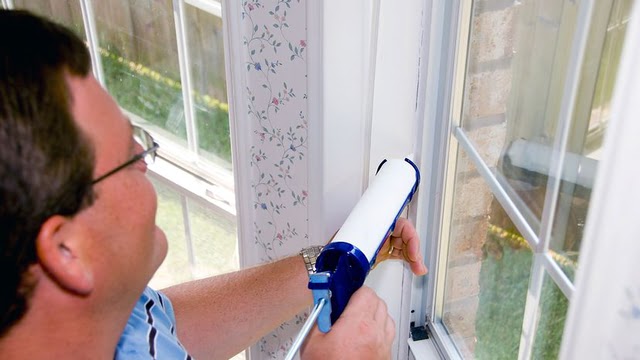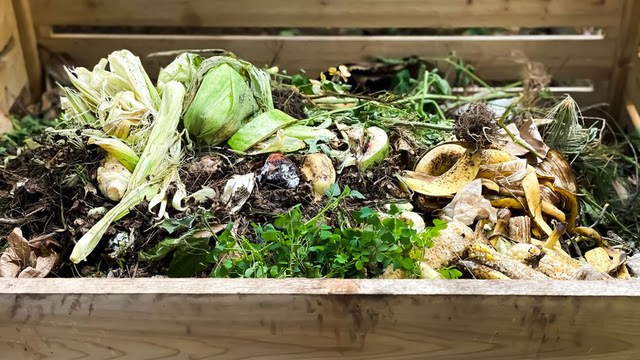Home Improvement

While some people find bugs fascinating, they definitely don’t belong in your home. Not only do they create unsanitary conditions, but they can also be a nuisance and even dangerous. Bugs like bees, wasps, and scorpions can cause painful stings, while fleas, mosquitoes, and ticks can carry diseases that can be transmitted to humans or pets. Even common pests like cockroaches can cause allergies and asthma attacks, especially in children [source: Asthma and Allergy Foundation].
With over 10 quintillion bugs in the world (that’s 10,000,000,000,000,000,000!), it can feel like an impossible task to bug-proof your home [source: Smithsonian Institute]. However, by understanding what attracts bugs and taking some simple steps, you can greatly reduce the risk of infestation.
Bugs need food, water, and shelter to survive, just like humans. By eliminating their food source and hiding spots, you can make your home less attractive to them. The best way to prevent an infestation is to keep the bugs out in the first place. You can achieve this by sealing cracks and gaps in your home’s exterior.
Ready to get started? Read on for 10 tips on how to bug-proof your home.
10: Seal Your Doors
To keep bugs from crawling under your door, install a sturdy steel or aluminum threshold. You can also use a door sweep to cover the gap between the threshold and the door bottom. Nylon brush sweeps are the best option for preventing bugs. You should also add weatherstripping or door-seal kits to the perimeter of the frame to keep insects from entering along the sides or top of the door. Use clear caulk to seal the joint where the door frame meets the wall and along the bottom of the frame where it meets the ground.
It’s important to remember that sealing your doors won’t help if they are left open. Consider installing a door closer to ensure that your door is always properly closed and latched.
Did you know that bugs entering your home through cracks and gaps could also be causing valuable heat to escape? This article suggests ways to improve your home’s energy efficiency by sealing up such gaps. By reducing energy consumption, you can minimize your impact on the environment and save money on utility bills.
One of the ways to bug-proof your home is by installing screens on windows and doors. This will keep pests out while allowing fresh air in. Remember to choose a 20-mesh or finer screen to prevent most household pests from entering. Patch up any holes or tears in existing screens using a screwdriver, scissors, household cement, or clear nail polish. Staple or use a splining tool to reattach loose screens to the frame.
Yard maintenance is also crucial in preventing bug infestations, particularly mosquitoes and fleas. Eliminating standing water in your yard by aerating the lawn or correcting poor drainage can reduce the mosquito population. Regularly clean gutters and drains of debris, and keep pools chlorinated and filtered. Remove any piles of leaves or debris in your yard, as they serve as hiding spots and breeding grounds for insects.
Step 7: Fix Cracks

Filling in cracks around your home is an effective way to prevent bugs from entering. Many insects can enter through tiny cracks or holes that are barely noticeable to homeowners. Therefore, sealing these openings on your home’s exterior can help to bug-proof your home. If a pencil can fit through a crack or gap, then a young mouse can also pass through it, along with a host of insects. To begin, inspect the exterior of your home carefully and look for damaged or missing sections of siding, cracks in foundations, loose or crumbling brick, and rotting wood. You’ll be amazed at how many openings you’ll find. Mortar or cement can be used to patch foundations and masonry walls, and damaged bricks can be replaced with new ones while filling the joints with mortar. Replace any rotting wood or trim, and repair or replace any damaged sections of siding or cladding. It may be necessary to add a layer of cementitious backerboard to areas at risk of termite damage, such as exposed foam insulation or wood sheathing. Pay particular attention to the roof line, where bees and wasps frequently build nests. Gaps or holes in the fascia board or soffit can lead to a dangerous encounter with stinging insects in your home. Caulk is an excellent way to seal your home and repair small cracks. It is inexpensive, easy to apply, and can go a long way towards keeping bugs out. Add caulk around window frames, and around any air intake or exhaust grilles. Use caulk to patch small cracks in foundations and siding, or to seal joints where the siding meets the roof or foundation. Latex varieties of caulk are best if you plan to paint over them. Clear silicone caulk is more flexible and less likely to dry out and crack over time.
Step 6: Seal Pipe Penetrations
If you’re like most homeowners, you’ve had to deal with utility installation at some point. The installers probably ran the lines into your home through holes drilled in the exterior walls. While the more conscientious installers may have added sealants or caulk around these lines on your home’s interior, it’s unlikely that they did so on the outside. So, there are probably utility or pipe penetrations in your walls that have large gaps around them, which provides an open invitation for insects. Through wall penetrations are commonly used for water, gas, electrical, or air-conditioning piping. Check the entire exterior of your home for these types of openings, as they may be located at either ground level or along the roof line. Often, you can trace cable and telephone lines from outside poles to find the path they take into your home. Don’t forget to check around outdoor faucets and electrical outlets. Smaller gaps or cracks can be filled using pipe sealants or caulk, while expandable polyurethane foam can be utilized for larger openings. Some installers prefer to add copper mesh or steel wool as a base layer behind this foam to deter insects that may bore through.
5: Cover Large Openings

If your roof has a hole, insects and other larger pests can easily enter your home. To keep them out, you can use hardwire cloth, which is a very fine wire mesh that can be stapled over larger openings. This material not only prevents bugs from entering your home but also prevents squirrel and raccoon infestations that can bring fleas and ticks. You can also use pre-fabricated chimney caps to cover larger openings in the roof. Install wire mesh over grills, vents, and registers in crawl spaces and basements to prevent pests from entering your home.
4: Don’t Invite Bugs To Dinner
Eliminating clutter and removing unprotected food and water sources is the best way to prevent bugs from entering your home. Cluttered homes provide an easy breeding ground for insects, which can reproduce in large numbers before you even notice them. Keep clutter to a minimum to prevent infestations.
Insects also need a source of food to survive. To prevent them from dining in your home, store all food in airtight containers, refrigerate unsealed food products, and limit food consumption to a single area of the home. Clean up crumbs and spills quickly and wash dishes immediately after use. Put pet food away after mealtimes or invest in a bug-proof container.
3: Store Trash Properly

To prevent pests from feasting on your trash, proper storage and handling are essential. Use trash cans with secure lids and take out the trash regularly. If you have a compost bin, make sure it has a secure lid and is properly maintained. Proper trash storage and handling can prevent cockroaches and other pests from entering your home.
To prevent insects from entering your home, it is important to keep food waste in the kitchen and dispose of it in a can with a lid that is emptied daily. Exterior cans should have self-closing lids and tight seals to keep insects out, and all trash and recycling bins should be cleaned regularly. If you have a compost bin, it should have a secure lid and be lined with hardwire cloth to prevent bugs from accessing it. It is also important to keep your home’s foundations clear and protected, as they are a common entry point for insects such as termites, ants, fleas, and spiders. Avoid creating wet areas near foundations by keeping wood piles, leaves, mulch, and grass clippings away from them. Check for gaps along the foundation and siding joints and use trim, caulk, or foam to fill them. To naturally control insect populations, encourage the presence of birds and bats in your yard. Warblers, swallows, and bats are effective at killing insects such as mosquitoes, wasps, flies, and spiders. To attract birds, provide trees and bushes where they can nest, a fresh water supply, and a birdseed or nectar feeder. Bat houses or roosts can be installed to encourage the presence of bats, which are active at night and can eat a variety of bugs and pests.
Bug Proof Home FAQ
If you want to prevent bugs from entering your home, you need to control their entry points. During the summer, you can add screens to your windows and large openings. Other measures include cleaning your foundation, avoiding clutter, and properly storing trash. If you take these steps and still have problems, call a professional pest control company to help you find the source of the infestation and tackle it.
There are many ways to pest-proof your house, such as properly storing trash, maintaining your yard, and adding screens to your windows. Other measures include repairing cracks, sealing doors, and sealing pipe openings.
To prevent bugs from entering your home through your windows, especially in the summer, you can add a tightly fitting 20-mesh or finer screen to keep even the tiniest bugs out. If you already have screens, check them for small tears and patch them with pieces of screen.
One of the best ways to keep your home pest-free naturally is by attracting natural predators to your property, such as birds and bats. Plant trees, bushes, and flowers that attract them and build birdhouses and bat boxes for them to live in.
Lots More Information
Related Articles
- How to Repair or Replace a Window Screen
- How Bug Spray Works
- What Are Silverfish and How Do You Get Rid of Them?
- How to Get Rid of Weevils
- Repairing Insect Damage to Your Home
More Great Links
- Organization for Bat Conservation
- Earth Easy Natural Pest Control Techniques
Sources
- Asthma and Allergy Foundation. “Insect Allergies.” (Dec. 7, 2021) https://www.aafa.org/insect-allergy/
- Carstens, Bryan. “What Do Bats Eat?” Organization for Bat Conservation. 2006. (July 29,
2009) https://web.archive.org/web/20070127060653/http://www.batconservation.org/content/Infobatarticles.html
- DIY Pest Control Guide. “How To Pest Proof Your Kitchen.” (Dec. 7, 2021). https://diypestcontrolguide.com/how-to-pest-proof-your-kitchen/
- Gouge, David H.; Olson, Carl; Snyder, Jennifer L.; Stoltman, Alison J.; “How to Bug Proof Your Home. The University of Arizona. (July 29, 2009) http://www.uainsectcollection.com/uploads/1/2/7/3/12737221/az1320.pdf
- Heloise. “How to Get Rid of Insects and Pests.” Good Housekeeping. (July 29, 2009) http://www.goodhousekeeping.com/home/heloise/pests/banish-insect-pest-jun06-2
- Lyric Bird Food. “Food Chain Tag.” (July 29, 2009) http://www.lyricbirdfood.com/adx/aspx/adxGetMedia.aspx?DocID=57,7,2,Documents&MediaID=39&Filename=lyric_lesson1_food_chain_tag.pdf
- Potter, Michael F. “How to Pest-Proof Your Home.” University of Kentucky. August 1997. (July 29, 2009) https://entomology.ca.uky.edu/ef641
- Ramsey, Dan. “How to Repair Windows.” HowStuffWorks. (July 29, 2009) https://home.howstuffworks.com/home-improvement/repair/how-to-repair-windows2.htm
- Smithsonian Institute. “Bug Info.” (July 29, 2009) http://www.si.edu/encyclopedia_si/nmnh/buginfo/bugnos.htm
- Terminix. “How to Pest-proof Your Home.” (Dec. 7. 2021). https://www.terminix.com/blog/diy/pest-proof-home-infographic/
FAQ
1. What are some common bugs that can infest homes?
Common bugs that can infest homes include ants, cockroaches, termites, bed bugs, fleas, ticks, spiders, moths, and silverfish.
2. How can I prevent bugs from entering my home?
You can prevent bugs from entering your home by sealing all cracks and gaps in your walls, windows, doors, and foundation with caulk or weatherstripping. You should also keep your doors and windows closed as much as possible, and use screens to prevent bugs from flying or crawling in.
3. How can I keep my kitchen bug-free?
You can keep your kitchen bug-free by storing food in airtight containers, cleaning up spills immediately, and keeping your countertops, sink, and floors clean and dry. You should also take out your trash regularly, and keep your garbage cans and compost bins sealed tightly.
4. How can I keep my bathroom bug-free?
You can keep your bathroom bug-free by fixing any leaks or moisture problems, such as a dripping faucet or a leaky showerhead. You should also keep your sink, bathtub, and toilet clean and dry, and use a drain cover to prevent bugs from crawling up through the pipes.
5. How can I prevent bed bugs?
You can prevent bed bugs by inspecting your hotel room or rental apartment before unpacking, and storing your luggage on a luggage rack or in the bathroom. You should also wash your clothes and bedding in hot water after traveling, and vacuum your mattress, box spring, and bed frame regularly.
6. How can I prevent termites?
You can prevent termites by keeping your home dry and well-ventilated, and fixing any leaks or moisture problems. You should also store firewood away from your home, and remove any dead trees or stumps from your yard. You can also have your home inspected by a professional pest control company annually.
7. How can I prevent mosquitoes?
You can prevent mosquitoes by removing any standing water from your yard, such as in bird baths, flower pots, and gutters. You should also use mosquito repellent and wear long-sleeved shirts and pants when outside during peak mosquito hours. You can also install screens on your doors and windows to keep mosquitoes out.
8. How can I prevent cockroaches?
You can prevent cockroaches by keeping your kitchen and bathroom clean and dry, and sealing all food in airtight containers. You should also take out your trash regularly, and keep your garbage cans and compost bins sealed tightly. You can also use baits, traps, or insecticides to kill cockroaches.
9. How can I prevent ants?
You can prevent ants by keeping your kitchen clean and dry, and sealing all food in airtight containers. You should also take out your trash regularly, and keep your garbage cans and compost bins sealed tightly. You can also use baits, traps, or insecticides to kill ants.

Brody is a skilled craftsman and gardening expert. From renovating living spaces to cultivating lush gardens, Brody’s knowledge and passion shine through, inspiring readers to embark on their own home improvement and gardening journeys with confidence.






Leave a Reply